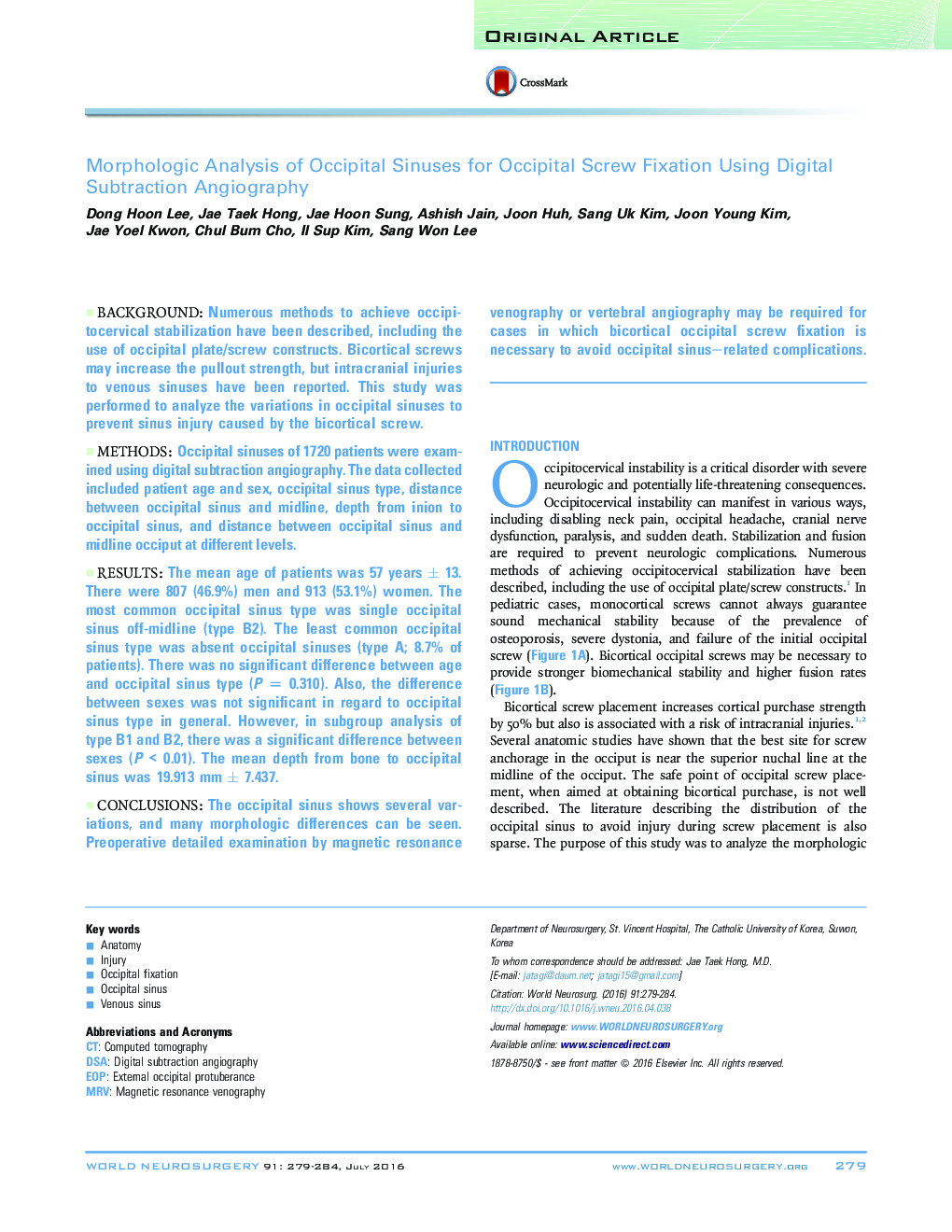| Article ID | Journal | Published Year | Pages | File Type |
|---|---|---|---|---|
| 3094552 | World Neurosurgery | 2016 | 6 Pages |
BackgroundNumerous methods to achieve occipitocervical stabilization have been described, including the use of occipital plate/screw constructs. Bicortical screws may increase the pullout strength, but intracranial injuries to venous sinuses have been reported. This study was performed to analyze the variations in occipital sinuses to prevent sinus injury caused by the bicortical screw.MethodsOccipital sinuses of 1720 patients were examined using digital subtraction angiography. The data collected included patient age and sex, occipital sinus type, distance between occipital sinus and midline, depth from inion to occipital sinus, and distance between occipital sinus and midline occiput at different levels.ResultsThe mean age of patients was 57 years ± 13. There were 807 (46.9%) men and 913 (53.1%) women. The most common occipital sinus type was single occipital sinus off-midline (type B2). The least common occipital sinus type was absent occipital sinuses (type A; 8.7% of patients). There was no significant difference between age and occipital sinus type (P = 0.310). Also, the difference between sexes was not significant in regard to occipital sinus type in general. However, in subgroup analysis of type B1 and B2, there was a significant difference between sexes (P < 0.01). The mean depth from bone to occipital sinus was 19.913 mm ± 7.437.ConclusionsThe occipital sinus shows several variations, and many morphologic differences can be seen. Preoperative detailed examination by magnetic resonance venography or vertebral angiography may be required for cases in which bicortical occipital screw fixation is necessary to avoid occipital sinus–related complications.
